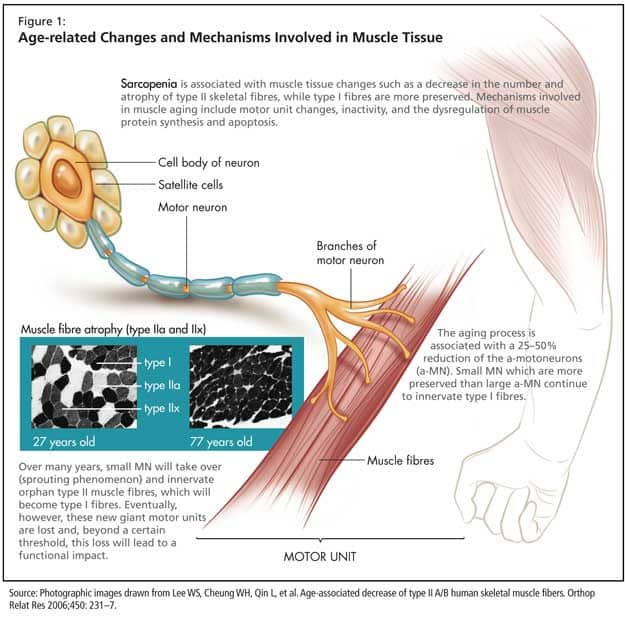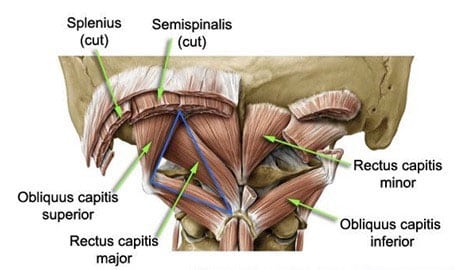
Image Credit – https://healthplexus.net/article/sarcopenia-and-muscle-aging
Positional awareness is highly dependent upon the feedback our nervous system receives from highly tuned movement centers such as the upper portion of the cervical spine. This region is known as the craniovertebral junction (CVJ) since it is the first spinal segments which serve as the connection between the head and neck. This junction also happens to hold a few records for spinal mobility and stability. The CVJ offers the highest degree of movement in the spine, just 2 spinal segments (C1-C2) are responsible for nearly 50% of rotation available in the entire neck. Plus, since this region is lacking a disc, mobile support is offered by overlapping muscles, thick cartilage and strong ligaments to provide stability for head movements and protection of the brainstem. A restriction in the CVJ drastically limits feedback to the nervous system making it difficult to discern correct position of the head. In this article, symptoms of dizziness and imbalance are associated with cervical pathology in the CVJ. Since a majority of balance centers (eyes, ears, vestibular system) are located in the head, any misrepresentation of head position can easily trigger a pattern of dizziness especially during head movements and transitions from one position to another.

Image Credit – https://web.duke.edu/anatomy/Lab01/Lab2_new2014.html
Hopefully, by now you are beginning to appreciate how closely neck mobility and muscle strength are related to positional awareness. It’s an all too common malady which is often ignored as a primary cause of dizziness. The combination of muscle weakness and joint stiffness is further accentuated when we choose more static postures. No doubt, it’s just too tough reading all those screens while moving. Screens for reading texts, answering emails, typing documents, searching the web. It almost seems like our lives are centered around our screens. Computers, tablets, phones, and watches all have screens which have become a necessity to complete daily tasks. Still, we never tire of them as we relax with screens at home to watch TV or YouTube. It’s useless to offer any ergonomic advice since screen viewing involves a variety of settings at the workplace, home, and car. Screens tend to rule our lives and the domain becomes even more pronounced for the aging adult. Perhaps increased reliance on viewing various screens has contributed to the rise of dizziness in the over 50 year old.




0 Comments